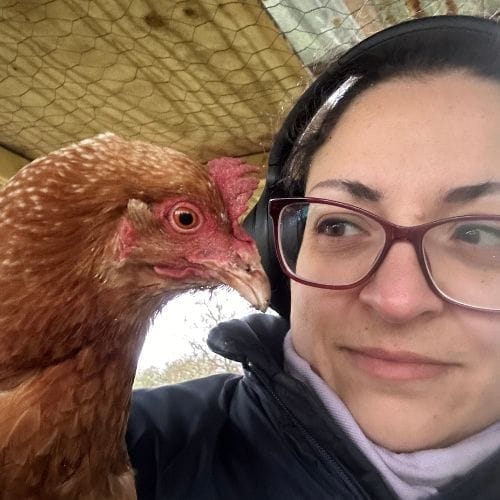
This site uses affiliate links and I may earn a small commission when you use my links and make a purchase without incurring additional fee yourself. Many thanks for supporting this website.
Please click here for more details.
What’s the Difference Between Custard and the Perfect Flan?
If you’ve ever asked yourself “Is flan the same as custard?” or wondered “What’s the difference between custard and crème brûlée vs flan?”—you’re not alone. These creamy desserts have been delighting sweet tooths for centuries, yet their similarities often cause confusion. Both custard and flan are made from eggs, milk, and sugar, but the way they’re cooked, served, and flavored gives them unique personalities.
In this guide, we’ll break down the difference between flan and custard desserts, show you how to make each one at home, and answer the most common questions like “Why is my flan rubbery?” or “How do I stop custard from curdling?”
What’s the Difference Between Custard and the Perfect Flan?
Custard: A Creamy Classic With Endless Variations
Custard has been around since ancient Rome, where early cooks mixed eggs with milk and honey. Today, custard is the base for countless desserts, from British baked custard pudding recipes to Italian panna cotta and the French favorite, crème brûlée.
When you search for “what is custard made of”, the answer is simple: it’s a mix of milk or cream, eggs, and sugar, sometimes thickened with cornstarch or flour. Depending on how it’s cooked, custard can be thin and pourable (like crème anglaise sauce) or thick and sliceable (like baked custard tarts).
Texture of custard vs flan: Custard tends to be richer and denser, especially when made with heavy cream.
Popular custard desserts: crème brûlée, baked egg custard, custard pie, trifle, Chinese steamed egg pudding.
How to make creamy custard at home: The secret is gentle cooking. Temper the eggs slowly and cook over medium heat to avoid curdling.
So, if you’ve been asking “what is the difference between custard and pudding”, think of custard as egg-thickened while pudding is usually thickened with starch.
Flan: The Caramel-Topped Showstopper
Flan, sometimes called crème caramel, takes custard one step further by adding a layer of glossy caramelized sugar topping. If you’ve ever Googled “what is flan made of”, the answer is nearly the same as custard—milk, eggs, and sugar—but the presentation makes it unique.
Unlike custard, flan is always baked in a water bath (bain-marie), which helps create that signature silky texture. Once chilled and inverted onto a plate, flan reveals its golden caramel sauce dripping luxuriously over the top.
Flan vs custard texture: Flan is usually lighter and silkier, with a jiggle that custard doesn’t always have.
Classic flan recipes: Spanish crema catalana, Mexican leche flan, Cuban caramel flan, Filipino leche flan.
How to make the perfect flan at home: Melt sugar until amber, pour into the baking dish, add custard base, and bake gently in hot water for the ultimate caramel flan.
Long-tail favorite: “How to make silky smooth flan without bubbles”—strain your custard before baking and never overbeat the eggs.
Custard vs Flan: What’s the Real Difference?
If you’ve ever typed into Google “flan vs custard difference explained”—here it is, plain and simple:
Caramel topping: Flan always has a caramelized sugar top, custard usually doesn’t.
Cooking method: Flan is baked in a water bath; custard can be baked, steamed, or cooked on the stovetop.
Texture: Flan is silky and wobbly, custard is denser and creamier.
Presentation: Flan is inverted for serving (revealing caramel), custard is often served in its dish.
So, while flan is technically a type of custard, it has its own identity thanks to the caramel layer and its delicate jiggle.
Making the Perfect Custard and Flan at Home
How to Make Creamy Baked Custard (Step by Step)
Whisk together eggs, milk, sugar, and vanilla.
Strain for smoothness.
Bake gently in ramekins (or cook on stovetop for pourable custard).
Chill before serving to set the custard.
Long-tail gem: “How to stop custard from curdling in the oven”—always use a water bath and low heat.
How to Make Caramel Flan at Home
Caramelize sugar in a saucepan until golden amber.
Pour caramel into baking dish and swirl to coat.
Add strained custard base on top.
Bake in a bain-marie until set with a slight jiggle.
Chill for 4+ hours, then invert to reveal caramel sauce.
Long-tail gem: “Why is my flan rubbery instead of creamy”—it was overcooked. Flan should be removed from the oven when it’s barely set in the center.
No. Crème brûlée is baked custard with a torched sugar crust. Flan is baked custard with liquid caramel on top.
Yes—“flan with condensed milk and evaporated milk recipe” is one of the most popular versions in Latin America.
Custard is thickened with eggs, pudding is thickened with starch.
Eggs cooked too quickly. Use gentle heat and stir constantly.
Lorem ipsum dolor sit amet, consectetur adipisicing elit. Autem dolore, alias, numquam enim ab voluptate id quam harum ducimus cupiditate similique quisquam et deserunt, recusandae.
Final Thoughts
So, what’s the real verdict in the custard vs flan debate? Custard is the versatile base that can go sweet or savory, while flan is the caramel-crowned superstar that steals the show at dessert time.
Whether you’re craving the dense creaminess of custard or the silky wobble of a perfect flan, mastering both opens up endless dessert possibilities. Next time you’re scrolling through recipes for “easy homemade custard desserts” or “authentic Mexican flan recipe”, you’ll know exactly which creamy delight you want to make.

Zia Paola
Zia Paola is a burnout survivor, chicken enthusiast, and former veterinary surgeon turned digital mischief-maker. She writes from her semi-chaotic smallholding in the UK, where she splits her time between unhinged chickens, rustic recipes, and helping others reclaim their lives from hustle culture. You can find her ranting lovingly about slow living, food, and freelance freedom at www.badinfluenzia.com.

Get mildly chaotic life advice, anti-burnout rants, and unsolicited chicken wisdom delivered straight to your inbox. No fluff. Just feathers.
Created with ©systeme.io



